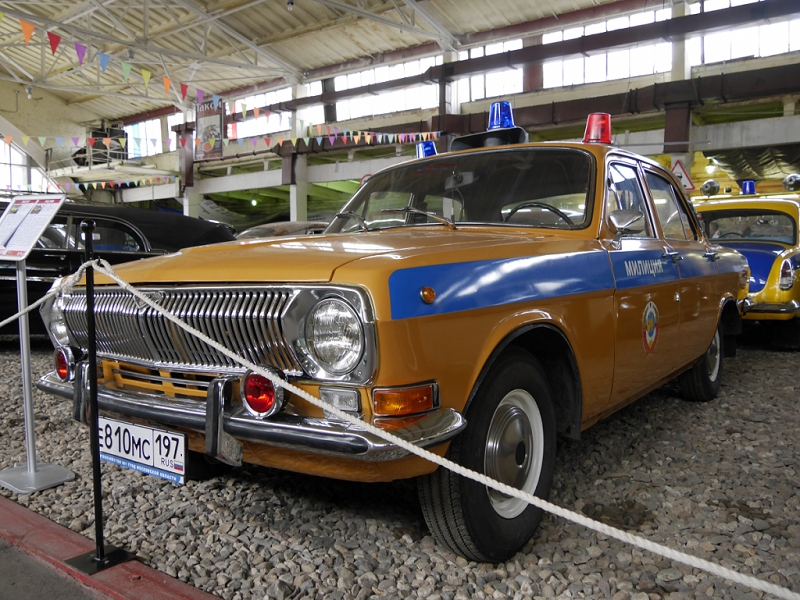Police cars: GAZ 24M. Made in the USSR in 1976. Power – 95 hp. Moscow transport museum
The GAZ-24 “Volga” is a car manufactured by the Gorky Automobile Plant (Gorkovsky Avtomobilny Zavod, GAZ) from 1970 to 1985 as a generation of its Volga marque. A largely redesigned version (practically, a new car in a modified old body) – GAZ-24-10 – was produced from 1985 to 1992. The Belgian-assembled rebadged models were sold as Scaldia-Volga M24 and M24D for the Western European market.
Development of the GAZ-24 (then called M-24) was mostly finished in 1966, when 12 of the third-series prototypes had been built and their design approved. It was unveiled towards the end of 1967. Only 32 units were built in 1968, though, primarily for road tests, with another 215 units built in 1969.
The 1968/1969-built Volgas are often called “preserial” because full-scale manufacturing started only in 1970 (18,486 units built). Distinctive features of the first several prototypes were two outside rearview mirrors fixed on the front fenders. Most of the preserial and all serial cars got one mirror placed on front left door.
The GAZ-24 was developed to replace the outdated Volga GAZ-21 developed in the 1950s. The new Volga had a longer wheelbase (2,800 mm (110 in)) than the GAZ-21 (2700 mm (106 in), but slightly shorter overall length (4,735 mm (186.4 in) compared to 4,810 mm (189 in)) and was substantially lower at 1,490 mm (59 in)) compared to 1,620 mm (64 in).
Width remained untouched. A long wheelbase, boxier styling, bucket seats with lower bases, and a flat roof made the new Volga generously sized inside, with comfortable five- or six-passenger seating. The car was designed to last for years in severe road conditions, and its reinforced unibody construction gave the Volga extra weight compared to foreign analogues, yet power steering was not even an option, and it gained the nickname barzha (barge).
The standard engine was aluminium-block overhead-valve 2,445 cc (149.2 cu in) ZMZ-24D inline-four producing 95 metric horsepower (70 kW) with one twin-choke carburetor. Only a four-speed manual transmission with floor-mounted shifter was offered (though GAZ did prototype an automatic, a column-shift manual, and a three-speed manual with overdrive).











